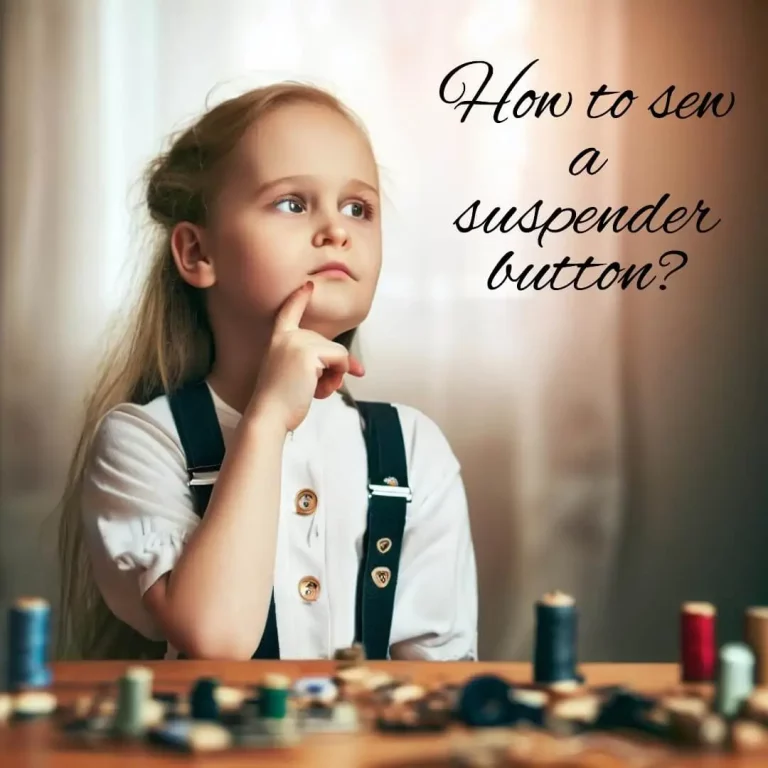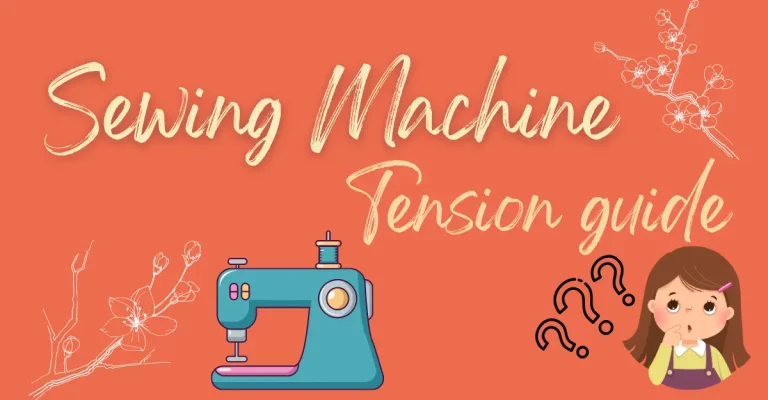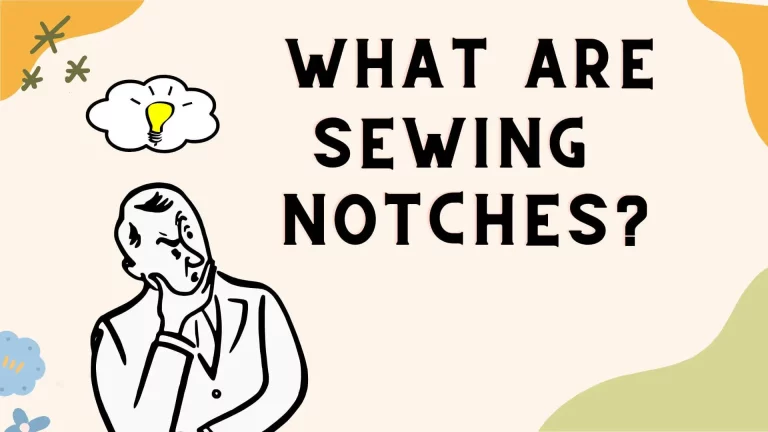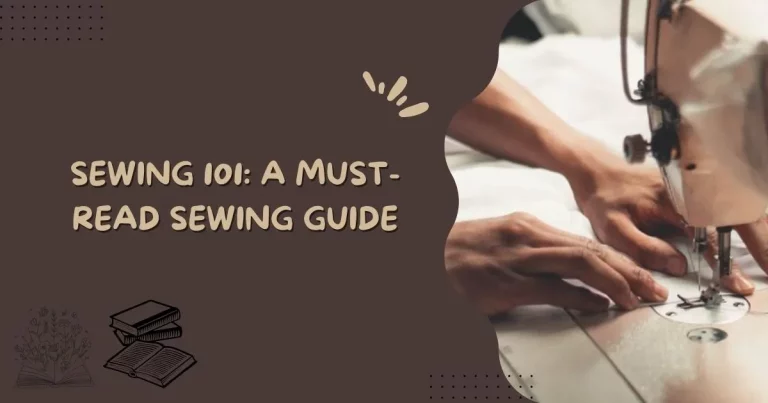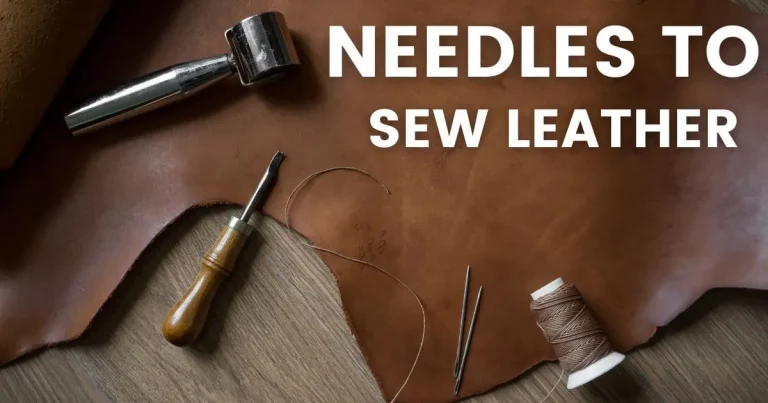Different Types of Sewing Machines (Which One to Choose?)
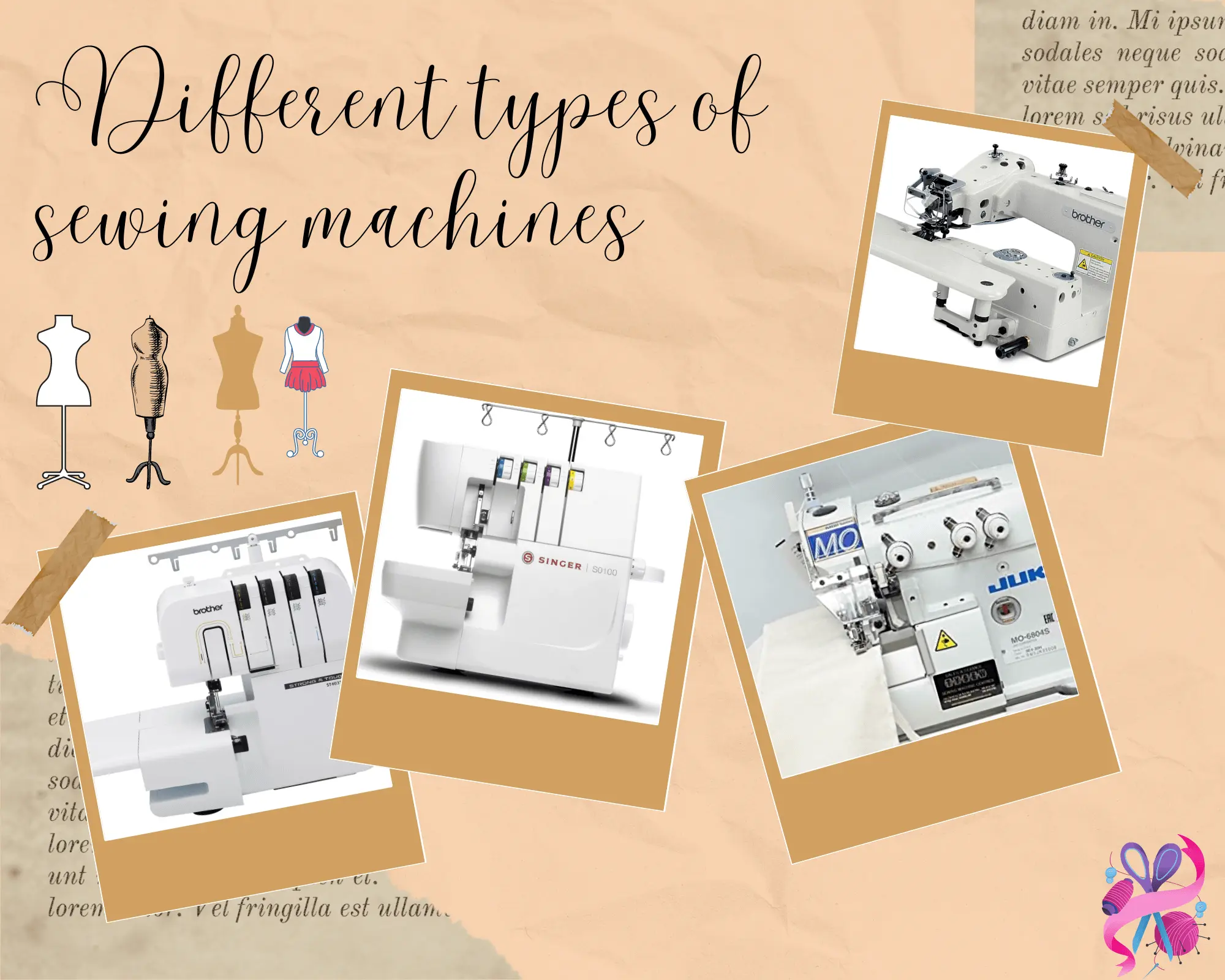
The sewing machine market has evolved significantly since Thomas Saint patented the first design in 1790. Today’s sewers face an overwhelming choice of machines, each engineered for specific tasks and skill levels. From basic mechanical models suitable for beginners to sophisticated computerized systems and specialized industrial equipment, understanding these options is essential for making an informed purchase decision.
This guide categorizes and explains every major type of sewing machine available in 2025. Whether you’re a beginner learning basic stitches, an intermediate sewer expanding your capabilities, or a professional requiring industrial-grade equipment, you’ll find detailed information on features, applications, and pricing to match your specific needs.
Understanding Sewing Machine Categories
Sewing machines fall into two primary categories: domestic and industrial. Domestic machines are designed for home use with versatility in mind, handling various fabrics and projects at moderate speeds. Industrial machines are built for continuous operation in commercial settings, typically specializing in one specific task performed at high speed with extreme precision. Industrial machines feature more powerful motors, heavier construction, and are often built into dedicated workstations.
Domestic Sewing Machines
Mechanical Sewing Machines
What it is: Traditional sewing machines operated through physical knobs, dials, and levers rather than electronic controls. These machines use a basic motor to drive the needle while all adjustments for stitch selection, length, width, and tension are made manually.
Best for: Beginners, budget-conscious sewers, and those who prefer straightforward operation without digital interfaces.
Key features:
- Manual adjustment dials for all settings
- Basic to moderate stitch selection (typically 6-25 stitches)
- Durable metal construction in many models
- No electronic components that can malfunction
- Simple maintenance requirements
Ideal projects: Basic garment construction, hemming, mending, alterations, simple home décor items like pillowcases and tote bags, cotton dresses, and repairs.
Pros:
- Lower initial cost and maintenance expenses
- Reliable and long-lasting with proper care
- Easy to learn and operate
- Fewer components that can break
Cons:
- Limited stitch variety compared to electronic models
- Manual adjustments can be time-consuming
- Lacks automated features like needle threading
- May struggle with very thick or specialty fabrics
Popular models: Singer Heavy Duty 4423, Singer M1000 Mending Machine
Who should buy this: Beginners who want to learn fundamental sewing skills without overwhelming features, sewers on a tight budget, or those who prefer mechanical reliability over digital convenience.
Electronic Sewing Machines
What it is: Machines that incorporate electronic components to automate functions while maintaining some manual controls. These typically feature digital displays or button panels for stitch selection and may include motorized adjustments for tension and other settings.
Best for: Intermediate sewers who want more features and convenience without the complexity of fully computerized systems.
Key features:
- Digital display or button interface for stitch selection
- Greater stitch variety (typically 30-100 stitches)
- Some automated features like automatic buttonholes
- Electronic tension and speed control
- Quieter operation than mechanical machines
Ideal projects: Varied sewing applications including garment construction, decorative stitching, home décor projects, quilting, and crafts requiring multiple stitch types.
Pros:
- More stitch options than mechanical machines
- Easier stitch selection via buttons or display
- Some quality-of-life automations
- Better precision on stitch length and width
- Mid-range pricing
Cons:
- Electronic components can require specialized repairs
- More expensive than mechanical models
- Slightly more complex for absolute beginners
- May not be as robust as mechanical machines
Popular models: Brother CP2160R, Janome C30
Who should buy this: Sewers who have mastered basic techniques and want to expand their project range, those seeking a balance between features and affordability, or crafters who appreciate digital convenience without full computerization.
Computerized Sewing Machines
What it is: Advanced machines controlled by internal microprocessors with LCD touchscreens or extensive digital interfaces. These machines offer hundreds of built-in stitches, programmable patterns, memory functions, and extensive automation.
Best for: Advanced sewers, professionals, and serious hobbyists working on complex projects requiring precision and customization.
Key features:
- Microprocessor-controlled operation
- LCD or touchscreen display
- Extensive stitch library (100-1,000+ stitches including alphabets and symbols)
- Memory functions to save custom patterns
- Automatic thread cutting, needle threading, and tension adjustment
- Speed control and stitch editing capabilities
- USB connectivity for design uploads (on some models)
Ideal projects: Intricate garment construction, quilting with complex patterns, embroidery, appliqué, decorative stitching, professional alterations, and any project requiring precise customization.
Pros:
- Maximum versatility and creative possibilities
- Automated features save significant time
- Precise control over every aspect of stitching
- Can grow with your skill level
- Many models include embroidery capabilities
Cons:
- Higher price point
- Steeper learning curve for all features
- Electronic repairs can be costly
- May be overwhelming for beginners
Popular models: SINGER Quantum Stylist 9960, Brother SE600, Janome Memory Craft 500E
Who should buy this: Experienced sewers ready to invest in long-term equipment, professionals who need advanced capabilities, or ambitious beginners willing to grow into the machine’s features.
Embroidery Machines
What it is: Specialized machines designed exclusively for creating decorative embroidered designs, monograms, letters, and pictures on fabric. These do not function as regular sewing machines and are dedicated to embroidery work.
Best for: Those focused specifically on decorative embroidery, personalization businesses, and crafters who want professional embroidery results.
Key features:
- Built-in embroidery designs and patterns
- USB or computer connectivity for custom design uploads
- Embroidery hoop system for fabric stabilization
- Automatic color changes (on advanced models)
- Touchscreen interfaces for design editing
- Large embroidery area (varies by model)
Ideal projects: Monogramming garments, creating custom logos, decorative embellishments on clothing and home textiles, personalized gifts, and small business custom embroidery work.
Pros:
- Professional-quality embroidery results
- Extensive design libraries included
- Ability to import custom designs
- Precision impossible to achieve by hand
- Business opportunity potential
Cons:
- Cannot perform regular sewing tasks
- Requires separate regular sewing machine
- Learning curve for design software
- Embroidery supplies (stabilizers, threads) add ongoing costs
- Slower than regular sewing for basic tasks
Popular models: Brother SE600 (combo sewing/embroidery), Janome Memory Craft 500E
Who should buy this: Sewers who specifically want to add embroidery to their projects, those starting custom embroidery businesses, or crafters focused on personalization and decorative work.
Quilting Machines (Long-Arm)
What it is: Machines featuring extended throat space (the distance between the needle and the machine body) specifically designed to accommodate large quilts and multiple fabric layers. These provide the workspace necessary for maneuvering bulky quilting projects.
Best for: Dedicated quilters working on large projects, those who quilt frequently, and professionals offering quilting services.
Key features:
- Extended throat space (12-30+ inches depending on model)
- Walking foot or dual feed system for even fabric feeding
- Specialized quilting stitches
- Large work surface
- Ability to handle multiple fabric layers
- Free-motion quilting capabilities
Ideal projects: Large quilts (queen and king-sized), intricate quilting patterns, free-motion quilting designs, layered fabric projects, and textile art.
Pros:
- Ample workspace for large projects
- Even feeding of multiple layers
- Specialized features for quilting techniques
- Professional-quality results
- Saves time on large projects
Cons:
- Requires significant workspace
- Higher price point than regular machines
- Specialized function limits versatility for non-quilting tasks
- Can be overwhelming for occasional quilters
Popular models: Juki HZL-F600 Quilt Pro Special
Who should buy this: Serious quilters who regularly work on large projects, those frustrated by workspace limitations on regular machines, or professionals offering custom quilting services.
Heavy-Duty Sewing Machines
What it is: Robust machines built with reinforced frames, powerful motors, and metal internal components designed to handle thick, tough fabrics and continuous use without performance degradation.
Best for: Sewers working with heavy materials like denim, canvas, leather, vinyl, and upholstery fabrics, or those requiring a machine for frequent, extended use.
Key features:
- Powerful motor (typically 1.0+ amps)
- Metal frame and internal components
- Reinforced construction
- High needle penetration force
- Ability to sew through multiple thick layers
- Higher stitches per minute than standard machines
Ideal projects: Denim jeans and jackets, canvas bags and outdoor gear, leather goods, upholstery work, home décor with heavy fabrics, and any project involving tough materials.
Pros:
- Handles materials regular machines cannot
- Durable construction for longevity
- Consistent performance under demanding conditions
- Suitable for both thick and regular fabrics
- Professional-quality results on challenging materials
Cons:
- Heavier and less portable
- May be overpowered for delicate fabrics
- Typically more expensive than standard machines
- Louder operation
Popular models: Singer Heavy Duty 4423
Who should buy this: Upholstery workers, bag makers, those who frequently sew denim or canvas, leather crafters, or anyone whose regular machine struggles with their preferred materials.
Portable and Mini Sewing Machines
What it is: Compact, lightweight machines designed for easy transport and storage. These range from fully functional smaller sewing machines to basic models for simple repairs.
Best for: Travelers, those with limited space, sewers who attend classes or workshops, or those needing a machine for occasional basic tasks.
Key features:
- Lightweight construction (typically 5-10 lbs)
- Compact footprint
- Built-in handle for carrying
- Basic to moderate stitch selection
- Battery or electric operation (some models)
- Easy storage
Ideal projects: Quick repairs, hemming, small sewing projects, travel mending, and basic alterations.
Pros:
- Easy to transport and store
- Affordable entry point for beginners
- Sufficient for basic sewing needs
- Convenient for classes or group sewing
Cons:
- Limited features and power
- Smaller work area
- May struggle with thick fabrics
- Not suitable for large or complex projects
- Less durable than full-sized machines
Popular models: Various compact models from Singer, Brother, and other manufacturers
Who should buy this: Students, apartment dwellers with limited space, travelers who sew on the go, or those wanting a backup machine for simple tasks.
Handheld Sewing Machines
What it is: Ultra-portable, battery-operated devices that operate similarly to a stapler, creating basic stitches for quick fixes and emergency repairs.
Best for: Emergency repairs, quick fixes while traveling, and temporary stitching solutions.
Key features:
- Handheld, stapler-like operation
- Battery powered
- Creates basic straight stitch
- Extremely portable
- No setup required
Ideal projects: Emergency hem repairs, quick mending of tears, temporary stitching, and situations where a full machine is unavailable.
Pros:
- Extremely affordable
- Requires no setup or workspace
- Perfect for travel emergencies
- Easy to use with minimal learning curve
Cons:
- Very limited functionality
- Weak stitches not suitable for permanent repairs
- Difficult to maintain consistent stitch quality
- Not a replacement for a regular machine
Who should buy this: Anyone wanting an emergency backup option, frequent travelers, or those needing occasional quick fixes without setting up a full machine.
Specialized Home Machines
Serger (Overlock) Machines
What it is: Specialized machines that trim fabric edges, enclose the raw edge with thread, and sew a seam simultaneously using multiple threads (typically 3-5) to create professional-looking finished seams.
Best for: Garment makers seeking professional finishes, those working with knit and stretch fabrics, and sewers who want to prevent fabric fraying.
Key features:
- Multiple thread cones (3-8 threads depending on model)
- Built-in cutting blade for trimming edges
- High-speed operation
- Creates stretchy, durable seams
- Various stitch types including rolled hems and flatlock
- Differential feed for fabric control
Ideal projects: Garment construction (especially knits), finishing seams on any fabric, creating professional hems, activewear and stretchy garments, and preventing fabric fraying.
Pros:
- Professional-quality seam finishing
- Extremely fast operation
- Creates stretchy seams perfect for knits
- Trims and finishes in one pass
- Essential for professional-looking garments
Cons:
- Threading complexity (multiple threads)
- Does not replace a regular sewing machine
- Steeper learning curve
- Ongoing thread consumption costs
- Requires specific needles and maintenance
Popular models: Janome 8002D Serger, BROTHER 4234D
Who should buy this: Garment makers who want professional results, anyone working frequently with knits, sewers frustrated by visible seam edges, or those ready to elevate their finishing quality.
Coverstitch Machines
What it is: Specialized machines that create the professional hem stitching seen on commercial t-shirts, activewear, and knitwear, featuring parallel rows of stitching on the top and a looper thread on the bottom.
Best for: Garment makers working with knits, those seeking professional hem finishes, and activewear creators.
Key features:
- Creates wide or narrow cover stitches
- Multiple needles (typically 2-3)
- Looper thread system for bottom coverage
- Creates stretchy, durable hems
- Decorative topstitching capability
Ideal projects: Hemming t-shirts, creating professional finishes on knitwear, activewear and sportswear construction, decorative topstitching, and attaching elastic or trim.
Pros:
- Professional-quality hems matching ready-to-wear garments
- Creates stretchy hems that won’t break
- Decorative possibilities
- Essential for professional knit garment construction
Cons:
- Limited to specific hemming and decorative tasks
- Does not replace regular sewing machine or serger
- Threading complexity
- Additional equipment investment
- Learning curve for tension adjustments
Who should buy this: Serious garment makers, those creating activewear or knitwear, sewers wanting commercial-quality hems, or professionals making clothing for sale.
Industrial Sewing Machines
Industrial Lockstitch Machines
What it is: Heavy-duty machines designed for continuous high-speed operation in commercial production environments, typically performing straight lockstitch seams with extreme precision and consistency.
Best for: Garment factories, commercial production facilities, and high-volume sewing operations.
Key features:
- Powerful industrial motor
- High-speed operation (3,000-5,000 stitches per minute)
- Built into dedicated workstation table
- Extremely durable construction
- Precise, consistent stitching
- Single-task specialization for efficiency
Ideal projects: Mass garment production, commercial sewing operations, upholstery manufacturing, and any high-volume sewing requirement.
Pros:
- Unmatched speed and efficiency
- Consistent professional results
- Built for continuous operation
- Extremely durable
- Long operational lifespan
Cons:
- Requires dedicated workspace and table
- Single-purpose functionality
- Higher initial investment
- Not practical for home use
- Requires industrial power supply (some models)
Popular models: JUKI DDL-9000CF Series, Jack JK-F4
Who should buy this: Commercial garment manufacturers, production facilities, custom clothing businesses with high volume, or serious professionals requiring industrial capabilities.
Chain Stitch Machines
What it is: Industrial machines that create chain stitch formations using one or two needles and loopers, producing durable seams and decorative stitching used in garment construction and embroidery.
Best for: Commercial garment production, decorative stitching operations, and binding applications.
Key features:
- Creates chain stitch formation
- Single or double needle configurations
- High-speed operation
- Used for both functional and decorative purposes
- Can create zigzag patterns
Ideal projects: Seaming in garment production, belt loops, decorative embroidery, binding edges, and creating stretch seams.
Pros:
- Durable, strong seams
- Fast operation speed
- Versatile for decorative and functional use
- Creates slight stretch in seams
Cons:
- Specialized single-purpose machine
- Seams can unravel if thread breaks
- Industrial space requirements
- Not suitable for home use
Who should buy this: Garment manufacturers requiring specific seam types, commercial embroidery operations, or factories needing specialized seaming capabilities.
Blind Stitch Machines
What it is: Specialized industrial machines that create nearly invisible stitching on one side of the fabric, primarily used for hemming where stitch visibility must be minimized.
Best for: Commercial garment finishing, professional alterations businesses, and mass production hemming operations.
Key features:
- Creates invisible or nearly invisible stitches
- Specialized needle and foot configuration
- High-speed operation for production efficiency
- Precise hem folding mechanisms
Ideal projects: Trouser and skirt hemming, suit finishing, curtain hems, and any application requiring invisible stitching.
Pros:
- Professional invisible hem results
- Fast production capability
- Consistent quality
- Essential for commercial garment finishing
Cons:
- Single-purpose functionality
- Requires operator skill
- Industrial workspace required
- Not practical for home use
Who should buy this: Alterations businesses with high volume, garment manufacturers, commercial production facilities requiring professional hemming, or dry cleaners offering alteration services.
Bartack Machines
What it is: Industrial machines that create dense, reinforced stitches at stress points on garments, such as belt loops, pocket corners, and areas requiring extra durability.
Best for: Jean and workwear manufacturers, commercial garment production, and any high-stress point reinforcement needs.
Key features:
- Creates extremely dense zigzag stitches
- Programmable bartack patterns
- High-speed operation
- Automatic cycle completion
- Precise placement capabilities
Ideal projects: Reinforcing belt loops on jeans, securing pocket corners, reinforcing stress points on workwear and uniforms, and any application requiring concentrated strength.
Pros:
- Essential for durable garment construction
- Extremely fast production
- Consistent, professional results
- Critical for commercial jean production
Cons:
- Single-purpose machine
- Industrial setup required
- High initial investment
- Requires operator training
Who should buy this: Jean manufacturers, workwear producers, garment factories producing durable clothing, or commercial operations requiring stress-point reinforcement.
Button Attaching and Buttonhole Machines
What it is: Specialized industrial machines designed for high-speed, precise button sewing or buttonhole creation in commercial production environments.
Best for: Garment manufacturers, shirt production facilities, and commercial operations requiring bulk button or buttonhole work.
Key features:
- Automated button placement and sewing
- Precise, consistent buttonhole creation
- High-speed production capability
- Programmable settings for different button sizes
- Automatic thread trimming
Ideal projects: Mass production of garments requiring buttons or buttonholes, shirt manufacturing, and commercial clothing production.
Pros:
- Extremely fast and consistent
- Professional-quality results
- Essential for commercial production
- Reduces labor costs in production
Cons:
- Single-purpose functionality
- High initial investment
- Requires production volume to justify cost
- Industrial workspace required
Who should buy this: Shirt manufacturers, garment production facilities, commercial clothing businesses with high volume, or operations where button/buttonhole quality affects production efficiency.
Cylinder Bed Machines
What it is: Industrial machines with a narrow, cylindrical bed rather than a flat surface, designed specifically for sewing tubular items and cylindrical constructions.
Best for: Shoe manufacturers, bag makers, sleeve production, and any operation requiring sewing around cylindrical or tubular items.
Key features:
- Cylindrical bed configuration
- Specialized for tubular sewing
- Industrial motor and speed
- Precise control for circular sewing
- Various cylinder diameter options
Ideal projects: Shoe construction, bag making, sleeve attachment, cuffs, tubular items, and any project requiring sewing around a cylindrical form.
Pros:
- Essential for certain product types
- Makes impossible tasks possible
- Professional results on specialized items
- High-speed production capability
Cons:
- Extremely specialized function
- Not versatile for general sewing
- Industrial setup required
- Significant investment for narrow use case
Who should buy this: Shoe manufacturers, professional bag makers, factories producing items with cylindrical components, or specialized production facilities.
How to Choose the Right Sewing Machine
Consider Your Skill Level
Beginners should focus on:
- Mechanical or basic electronic machines
- Models with clear, straightforward controls
- Machines offering 10-30 built-in stitches (sufficient for learning)
- Built-in tutorials or clear instruction manuals
- Recommended: Mechanical machines like Singer Heavy Duty 4423 or entry-level electronic machines
Intermediate sewers benefit from:
- Electronic or entry-level computerized machines
- 30-100 stitch options for project variety
- Some automation features (automatic buttonholes, needle threading)
- Capability to grow with expanding skills
- Recommended: Electronic machines like Brother CP2160R or Janome C30
Advanced sewers and professionals require:
- Computerized machines with extensive features
- Specialized machines for specific tasks (sergers, embroidery, coverstitch)
- Industrial machines for commercial production
- Multiple machines for different applications
- Recommended: High-end computerized machines, specialized equipment based on focus area
Match Machine to Your Primary Projects
Garment Construction:
- Domestic use: Electronic or computerized machine + serger for professional finishing
- Professional use: Industrial lockstitch + serger + specialized machines as needed
Quilting:
- Occasional quilters: Regular machine with quilting features
- Serious quilters: Dedicated quilting machine with extended throat space
- Professional quilters: Long-arm quilting system
Repairs and Alterations:
- Home use: Basic mechanical or electronic machine
- Professional alterations business: Heavy-duty machine + blind stitch machine + specialized equipment
Embroidery and Decoration:
- Hobbyists: Combination sewing/embroidery machine
- Serious embroiderers: Dedicated embroidery machine with large design area
- Business use: Multi-needle embroidery machine
Heavy Materials (Leather, Denim, Canvas):
- Any level: Heavy-duty sewing machine with powerful motor
- Professional use: Industrial heavy-duty machines
Knitwear and Activewear:
- Home use: Serger + coverstitch machine + regular sewing machine
- Professional production: Industrial serger + coverstitch + lockstitch machines
Budget Considerations
Under $200:
- Basic mechanical machines
- Portable/mini machines
- Entry-level options for learning fundamentals
- Sufficient for simple projects and repairs
$200-$500:
- Quality mechanical machines
- Entry-level electronic machines
- Budget sergers
- Good balance of features and affordability
$500-$1,500:
- Mid-range electronic machines
- Entry-level computerized machines
- Quality sergers
- Some specialized machines
- Suitable for serious hobbyists
$1,500-$5,000:
- Advanced computerized machines
- Combination sewing/embroidery machines
- Professional-grade domestic machines
- Entry-level industrial machines
- Quality long-arm quilting machines
$5,000+:
- Professional embroidery machines
- Long-arm quilting systems
- Multiple specialized machines
- Industrial production equipment
- Commercial-grade setups
Available Space Assessment
Small Apartment/Limited Space:
- Portable or compact machines
- Models that store easily
- Consider space-saving folding tables
- Prioritize single versatile machine over multiple specialized ones
Dedicated Sewing Room:
- Full-sized machines appropriate for needs
- Option for multiple specialized machines
- Long-arm quilting machines if quilting is primary focus
- Industrial machines if production is planned
Professional Workspace:
- Industrial equipment mounted on dedicated tables
- Multiple specialized machines for different tasks
- Adequate space for material storage and workflow
- Consider production volume when planning layout
Common Mistakes to Avoid
Buying Too Advanced for Skill Level: Many beginners purchase computerized machines with hundreds of stitches and advanced features they won’t use for years. This leads to overwhelm, confusion, and machines sitting unused. Start with appropriate equipment for your current skill level and upgrade as abilities grow.
Ignoring Maintenance Requirements: Sergers require complex threading and regular maintenance. Industrial machines need professional servicing. Some machines require specific needles or parts that may be expensive or difficult to source. Research ongoing maintenance needs and costs before purchasing.
Not Considering Thread Capacity: Sergers use 3-8 thread cones simultaneously, creating ongoing costs. Embroidery machines consume significant thread. Calculate these recurring expenses when budgeting.
Overlooking Workspace Size: Long-arm quilting machines require substantial dedicated space. Industrial machines mount to specific tables. Measure your available workspace before purchasing large machines.
Focusing Only on Price: The cheapest machine rarely meets needs long-term. Conversely, the most expensive isn’t always necessary. Focus on features you’ll actually use rather than price alone.
Expecting One Machine to Do Everything: No single machine handles every task professionally. Serious sewers typically need multiple machines for different purposes. Plan for building a collection over time rather than expecting one machine to meet all needs.
Buying Without Testing: Purchase from dealers who allow testing when possible. Sewing machine feel and operation vary significantly between brands and models. What works for others may not suit your preferences.Ignoring Brand Reputation and Support: Consider availability of parts, quality of customer service, and dealer support network. Machines from companies with poor support create problems when repairs or questions arise.
Frequently Asked Questions
Conclusion
The sewing machine market offers specialized equipment for every skill level, project type, and budget. Mechanical machines provide straightforward, reliable operation for beginners and those preferring simplicity. Electronic and computerized models offer expanded capabilities for intermediate and advanced sewers. Specialized machines like sergers, embroidery machines, and coverstitchers enable professional-quality results in specific applications. Industrial equipment serves commercial production needs with unmatched speed and precision.
Success in choosing the right machine depends on honest assessment of your current skill level, primary project types, available space, and realistic budget. Beginners should start with appropriate foundational equipment and expand capabilities as skills develop rather than investing in advanced features they won’t use for years. Serious sewers typically need multiple machines for different purposes, no single machine excels at every task.
Match your machine choice to your actual needs rather than aspirations or trends. The best sewing machine is the one that handles your regular projects efficiently, fits your workspace and budget, and matches your current skill level while offering room to grow. Start with quality basic equipment appropriate for your immediate needs, master those capabilities, then add specialized machines as specific requirements emerge.
Whether you’re mending clothes, constructing garments, creating quilts, or running a commercial production operation, understanding the distinct capabilities and limitations of each machine type ensures you invest in equipment that serves your specific requirements effectively.

